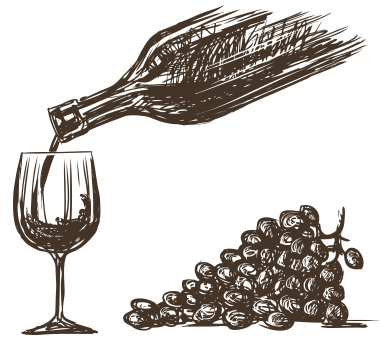by Richard Paul Hinkle
A generally benign disease, zin-mania’s ground zero can be traced to a small, garage winemaker who turned pro in 1978 when he opened the winery, Rosenblum Cellars. A Minnesota native, Kent Rosenblum moved to Alameda to join a veterinary practice in 1970 … and became captivated and captured by what happened to grape juice when it was fermented. When I first wrote about Kent and Kathy Rosenblum for the second edition of my Central Coast Wine Book (Vintage Image, 1981), they were doing barely 1,000 cases a year, including a 1.5 percent residual sugar white riesling.
Since then, the winery—originally between a soul food place and a brothel—has expanded production to include zinfandels from all over the Golden State, narrowed its focus (to zinfandel and a few Rhone-styled wines), sold to Diageo, a British alcoholic beverage company, and moved production north to the Napa Valley at Beaulieu Vineyard. (The original Alameda tasting room remains intact, still a baseball’s throw to the Amtrak Station.)
“You have to understand, Kent was something of a visionary,” says current winemaker John Kane, who took over from Jeff Cohn a little more than six years ago. “He was probably 70 years ahead of his time, making red zin when most everybody was drinking white zin, and making them as individual, vineyard-designated wines. By the time the world began to recognize red zin, he had all the really good vineyards under long term contracts!”
Born in Visalia (near Fresno) in 1975, Kane is part of a family that had come west from Maine, where they grew blueberries and fished for lobster. “My mother was a teacher and my dad sold insurance, mostly to farmers,” says Kane. “So I was always around farms. I worked in packing sheds, sprayed for weeds, and started out at Fresno State in biochemistry on the anesthesiologist/doctor path. But I was spending my free time hanging out at wineries along the Highway 46 corridor in Paso Robles. Wild Horse was a great scene then. So I switched majors. Jeff Cohn had done some tastings at the college, we had met a couple of times, and he called me for an interview to do a harvest internship at Rosenblum for the summer of 2001 … and I just stayed!”
Kane says that he immediately felt at home. “When you’re drawing fruit from Santa Barbara to Mendocino, and pretty much everyplace in between, it’s like working for 30 wineries! No time to get bored. I love the diversity of it all.” (There is no lack of diversity at a winery that now, counting all lines, produces more than 200,000 cases a year.)
One concern that Kane faces is that some of the small vineyards Rosenblum draws from are increasingly impinged upon by the expanding demands of residential housing. “We recently lost half of one of our best vineyards [Carla’s Vineyard] in Contra Costa County when Kmart tried to buy the whole of it. We were able to retain half of the vineyard, but it was a close call. Another of our Contra Costa vineyards, Planchon in Oakley, is completely surrounded by a housing development, so we have to let the neighbors know to close their windows when we spray the vines.”
Kane, an avid outdoorsman—hunter, camper, snow skier—when he’s not making wine, loves what he’s doing just as much. “I love getting out and visiting with these guys. I put more than 25,000 miles on my truck each year. It’s simple: The more these farmers and I are involved with one another, the better the product is. Simple as that.”
He thrives equally on getting out and interacting with the public. “We pour at the ZAP [Zinfandel Advocates and Producers] tastings and show off an older wine. Tasters are amazed, saying, ‘I didn’t think zinfandel could age.’ Well, now they know.” Now they do, indeed. And the mania spreads.
Keep your palate open to the Vintner’s Cuvee Zin, inexpensive but tasty, with red currant and raspberry and black pepper spiciness. The Sauret Vineyard Zin has a steely mineral core and syrup-rich boysenberry and blackberry fruit, the Rockpile Road Vineyard Zin is black-hole dense with blueberry fruit and clove spiciness, and the Planchon Vineyard Zin is all black: black pepper, blackberry and black cherry.
Richard Paul Hinkle is the author of nine wine books and the co-founder of The Wine Spectator. He began writing a wine column for the Pacific Sun in 1984, and now writes on myriad subjects from his Santa Rosa home. Contact him at le*****@********un.com.








